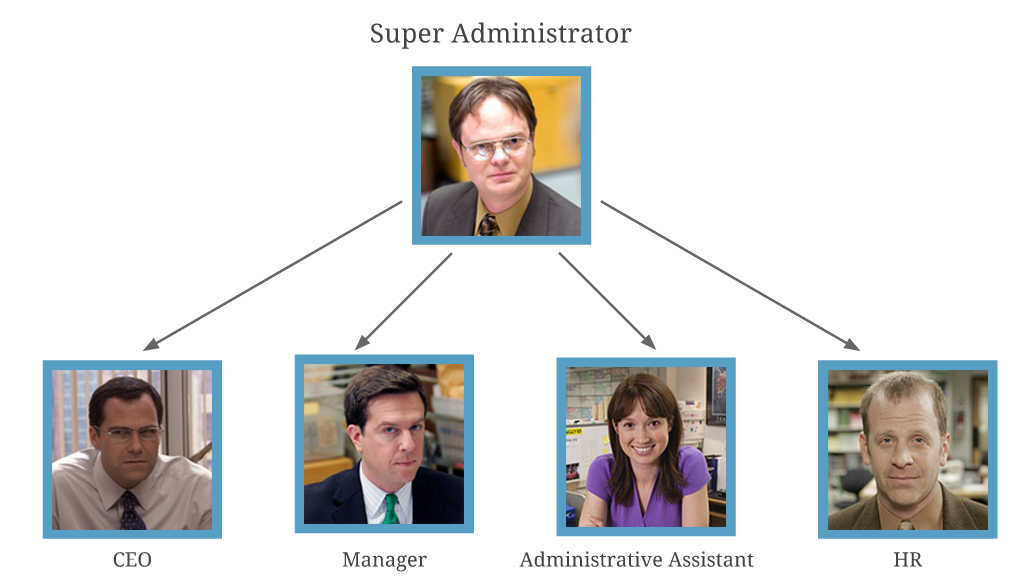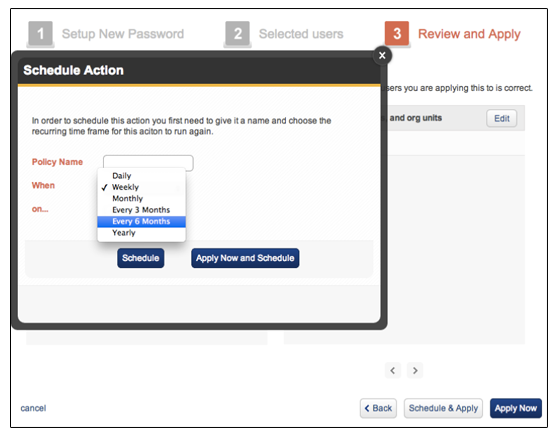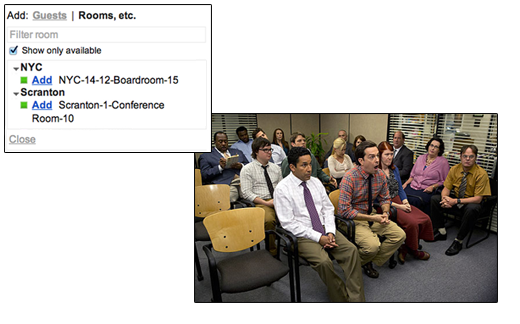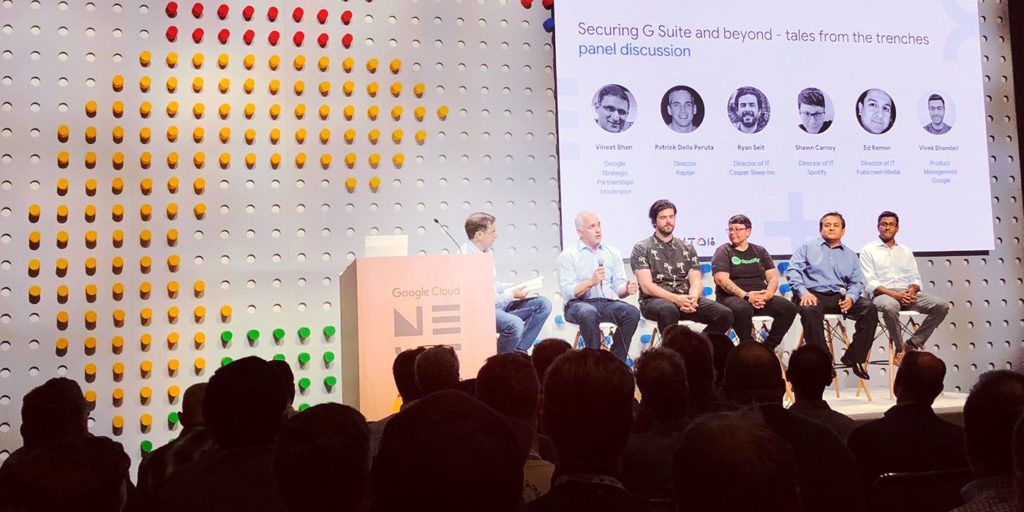Dunder Mifflin Goes Google
July 23, 2013
5 minute read

Last month, David Politis wrote a blog post entitled “Optimizing for Long Term Google Apps Adoption.” The purpose of the post was to provide best practices for making the most of Google Apps after the initial migration to the cloud, which typically begins with mail, calendar and contacts. The article, which you can read here, gives IT admins ideas and solutions for rolling out additional features of the suite, setting up OUs to make provisioning and managing users easier and much more.
To highlight these best practices in a tangible, easy to digest manner, we’re launching a new series on the blog today featuring everyone’s favorite fictional organizations and their moves to the cloud.
Have a company you want to see go Google? Let us know in the comments!
Dunder Mifflin, Inc.

Employees: 1,000
Founded: 1949
Industry: Paper Goods
Website: www.dundermifflin.com
Founded in 1949 by Robert Dunder and Robert Mifflin, who met on a tour of Dartmouth College, Dunder Mifflin originally set out to sell brackets for construction use. However, the company later transitioned to sell paper goods to local businesses. Dunder Mifflin has corporate headquarters in New York City and regional branches in Scranton, Pennsylvania, Akron, Ohio, Nashua, New Hampshire and Albany, Buffalo, Rochester, Syracuse and Utica, New York.
In 2010, Sabre, a prominent printer company, purchased Dunder Mifflin and in 2013 former CFO, David Wallace, purchased the company from Sabre to reinstate Dunder Mifflin as an independent company and took over the role of CEO.
Phase 1: Migrating to Google Apps
 While Dunder Mifflin has flourished over its 60 year history, in recent years, the company has faced increasing pressure from big-box competitors like Staples, who compete heavily on price. In an effort to cut down on computing costs, while also moving its IT system into the 21st century and creating a more collaborative working environment across its many offices, Dunder Mifflin decided to migrate to Google Apps.
While Dunder Mifflin has flourished over its 60 year history, in recent years, the company has faced increasing pressure from big-box competitors like Staples, who compete heavily on price. In an effort to cut down on computing costs, while also moving its IT system into the 21st century and creating a more collaborative working environment across its many offices, Dunder Mifflin decided to migrate to Google Apps.
To assist with the migration, Dunder Mifflin relied heavily on their Scranton branch Regional Manager and Assistant to the IT Administrator, Dwight Schrute.
Phase 2: Setting the Foundation for Long Term Success
Now that Dwight and Dunder Mifflin have made it to the cloud, what steps should he take next to set the company up for long term success on Google Apps?
Configuring Organizational Units
First and foremost, Dwight should set up organizational units (OUs) for his domain. OUs allow Dwight to turn certain services on or off for certain people. For instance, Dwight wants to disable Google+ for Kelly Kapoor, but not for everyone. To do this, Dwight separates employees into two different OUs – one where Google+ is enabled and one where it is disabled.
Creating Access Roles
Next, Dwight would like to grant modified permissions to certain employees within his domain. Creating Access Roles allows a super administrator to grant delegated admin rights to other users within the organization. Depending on their role within the company and their specific needs – onboarding new users, resetting passwords, viewing Google Drive documents created and shared by different employees – the level of access granted will differ.
Setting Up Password Policies
It’s also considered a best practice to set up password policies, which will force employees to reset passwords on a regular basis, which ensures company data is kept secure.
In order to set up a password policy, you’ll need the help of a third-party product like FlashPanel. Using FlashPanel’s Reset Password feature, a domain administrator can force end users to change their passwords on a daily, weekly or monthly basis.
Standardizing Email Signatures
While previously a non-issue, David Wallace’s purchase of Dunder Mifflin has led to some corporate branding changes. Wallace would like to implement a standardized email signature throughout the company in order to streamline and professionalize the brand.
To enforce a standardized email signature, Dwight again needs the help of a third-party product to push out and enforce a common signature. Using FlashPanel’s email signature tool, Dwight creates, applies and enforces (through a recurring policy), the below signature.
Building Out Calendar Resources
Particularly in Dunder Mifflin’s Scranton Branch, where employee common areas are limited, it’s a good idea to set up calendar resources, which allow employees to book resources – rooms, company cars and more – for specific time periods. To start building out Dunder Mifflin’s calendar resources, Dwight creates a resource for the branch’s conference room, site of many impromptu branch wide emergency meetings.
Calendar resources can be created and managed in the Google Apps admin console.
Phase 3: Rolling out Additional Features of the Google Apps Suite
Now that Dwight has set up his domain for long term success on Google Apps, he can begin to explore more areas of the suite.
Determining a Rollout Strategy for Google Drive
While eventually Dunder Mifflin would like to use every part of the Google Apps suite, Dwight decides that rolling out Drive will be a good place to start the company’s expansion into more areas of the platform.
Before rolling out Google Drive to a broader to a group of early adopters, Dwight first needs to test Drive in the IT department, which happens to be a one-man team at this point. Once Dwight is familiar with Drive and confident he can troubleshoot questions regarding the service, he can roll out Drive to a group of early adopters.
To pinpoint these early adopters, Dwight sends out a survey through Google Forms to gain a better idea of who is familiar with Drive or who is just generally excited about Google Apps.
To segment the early adopters, Dwight adds them to their own OU and enables the Drive service. These early adopters can later become ‘Google Guides’ to help train the entire company come full rollout.
Reporting on Usage
Following Dunder Mifflin’s broad rollout of Google Drive, it’s a good idea for Dwight to check in on usage of the application. To do so, Dwight can use FlashPanel’s reporting engine, which provides statistics on the number of documents users are sharing versus uploading (from services like Microsoft Word), how Drive documents are being shared and so forth.
If Dwight feels that adoption is not occurring as quickly as it should be, he can conduct additional user training sessions.
Celebrating Your Accomplishments
Finally, it’s important that Dunder Mifflin celebrate its move to Google Apps and Google Drive. By taking the time to acknowledge the work that went into the move to Apps and Drive, Dwight can reinforce the benefits of the move and get employees excited for the next feature roll out.












